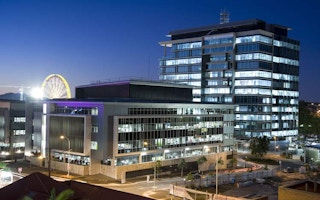Green Star-certified buildings are growing in Queensland, said the Green Building Council of Australia (GBCA) in a statement this week, reflecting how building green is now a business imperative for the property and construction sector.
To continue reading, subscribe to Eco‑Business.
There's something for everyone. We offer a range of subscription plans.
- Access our stories and receive our Insights Weekly newsletter with the free EB Member plan.
- Unlock unlimited access to our content and archive with EB Circle.
- Publish your content with EB Premium.
Green Star is Australia’s official mark for sustainable projects. The certification is given to any type of building that passes the GBCA’s comprehensive rating system, which assesses the design, construction and life cycle of a project.
The designation is akin to the United States LEED (Leadership in Energy and Environmental Design) label and rating system.
Currently, there are 582 Green Star-certified projects in Australia, of which 126 are in Queensland.
This is “despite a changing political environment and fluctuating commitment to environmental issues from some governments over the past few years,” said Robin Mellon, GBCA chief operating officer.
“We know the Queensland property and construction sector is experiencing challenging times, and another cost-of-living budget is causing a tightening of belt buckles. However, the industry is demonstrating that Green Star-rated buildings make smart economic sense,” he explained.
Buildings that are designed with sustainability in mind and are built to be future-proofed bring about significant savings, especially in the long run.
For example, Green Square North Tower, which was certified in 2009 for its office design and construction, has a tenant with reduced energy bills in spite of having doubled their floor space. According to the GBCA, that tenant’s energy bill went from $12,000 to $8,000 per month.
Orion Springfield Town Centre, another Green Star project, uses only half the energy of a similar-sized shopping mall, as well as 60 per cent less water. Energy and water efficiency are important benefits, more so when utility prices lately have spiked.
“Green Star-rated buildings are better performing assets,” emphasised Mellon. Quoting the Building Better Returns report, he said, “Green Star buildings deliver a 12 per cent ‘green premium’ in value and a five per cent premium in rent, when compared to non-rated buildings.”
The said report, published in September 2011, was commissioned by the Australian Property Institute and the Property Funds Association of Australia in order to conduct the first major assessment of green office buildings and the value it adds to a business’ bottom line.
But aside from cost effectiveness, the Green Star certification is about environmental sustainability. The rating system checks the amount of resources used, waste generated and emissions produced in order to reduce impact. In terms of emissions, according to the GBCA, Green Star-rated buildings only produce one-third the amount of greenhouse gas emissions coming from non-rated buildings.
Green Star certifications also lead to other advantages such as tenant and employee attraction, enhanced marketability, healthier and safe environments, and increased productivity.
“Committing to more sustainable buildings is not about ‘green tape’,” Mellon said. “It is about boosting the economy, increasing green skills and jobs and making healthier, more productive and more efficient places to live, work and learn. Rather than support ‘development at any cost’, the GBCA would like to see Queensland adopt policies that encourage and promote efficient and sustainable development.”










